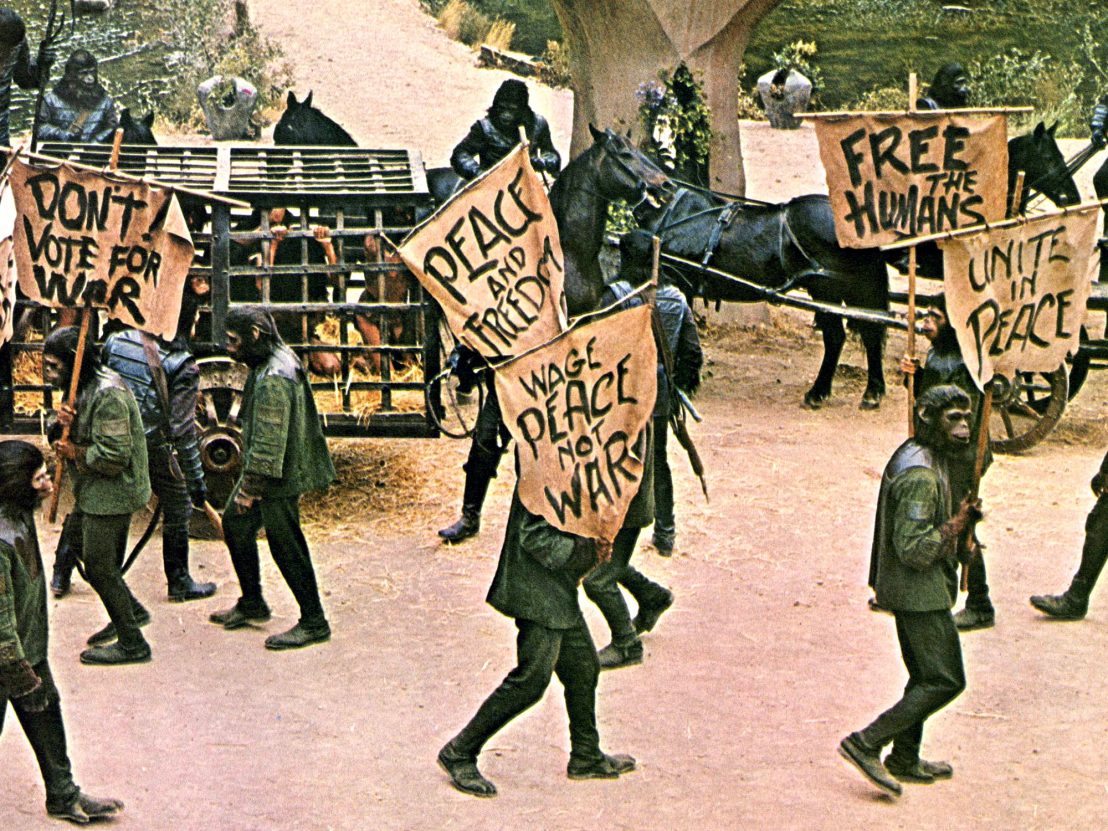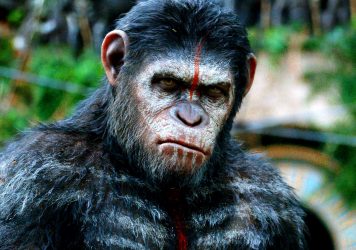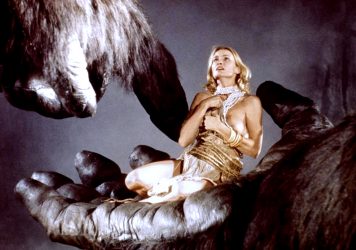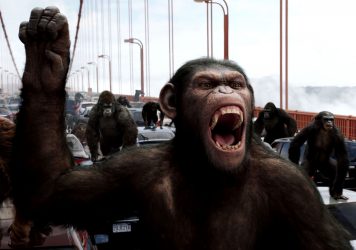
The success of the rebooted Planet of the Apes series is proof that there’s still an audience for simian sci-fi, and the long-running series has always had the market cornered in apocalyptic cinema. Charlton Heston cursing humanity at the end of the 1968 original is fondly remembered, but how much do we remember of the lesser-known instalments of the original series? Each of the first five POTA films satirises humanity while exposing the weaknesses that lead to our fall from grace – critiques which in these times we’d do well to remember. Let’s take a look back at some of the lessons in the apocalypse which these films have taught us.
The first entry in the series is a thinly-veiled metaphor for bigotry and dogmatic thinking, a contemporary issue in 1968 but no less pertinent today. Crashing on what appears to be an alien planet ruled by apes, Charlton Heston’s astronaut, Taylor, finds himself at the mercy of a simian society that hunts ‘wild’ humans for sport.
After being captured, Taylor is hauled before a tribunal of orangutans. He faces the obdurate Dr Zaius, whose unwavering dogma blinds him to the obvious fact that Taylor is sentient. Taylor’s plight in the face of prejudice has parallels with the civil rights movement, but so too does the apes’ highly segregated society, with orangutans, chimpanzees and gorillas all fixed to the rungs of a rigid hierarchical ladder.
When Zaius finally admits that humanity once ruled over apes, he warns Taylor not to seek too much truth: “you might not like what you find.” Indeed he doesn’t – the wrecked statue of liberty sticking out of the sand is one of the most devastating twists in cinema. When asked what Taylor will meet in his search, Zaius’ dry reply, “his destiny” is a bleak statement on humanity’s catastrophic impulse to destroy.
The first sequel picks up where the original left off, with Taylor and his mute companion, Nova, making their way across the forbidden zone. James Franciscus’ Brent soon arrives in a second ship, taking over lead duties from Heston. Beneath, while a step down from its predecessor, remains worthwhile for exploring how the original’s theme of bigotry leads to militarism and religious fundamentalism.
With the apes whipped into fear, the gorillas stage a fascistic take over, imprisoning dissident chimps with the tacit approval of the arrogant, self-serving orangutans. Meanwhile, Taylor is imprisoned by an underground cult of psychic humans who worship an unexploded nuclear bomb. This may be a mediocre film, but bomb worship as a metaphor for religious extremism is especially potent, and inventive combinations of set design and matte shots result in some wonderfully bleak imagery.
Despite its lesser status, the film remains influential, with its visual style inspiring the video game series Fallout. When the apes and humans inevitably clash, the unfortunate Nova and Brent are both killed and so, in the most nihilistic statement of the series, Taylor chooses annihilation, setting off the doomsday bomb and destroying the earth.
Think that the total destruction of earth would spell the end of the series? Wrong. Escape from the Planet of the Apes circumvents the tricky issue of planetary armageddon by retroactively having the original’s Zira and Cornellius escape using Taylor’s crashed spaceship, somehow flung back in time to 1973. This is easily the silliest entry of the series, but with no less a satiric eye fixed on humanity’s destructive tendencies.
Here, that tendency is consumerist and celebrity culture. In a reversal of Charlton Heston’s original predicament, the apes quickly find themselves celebrities, enjoying the excesses of opulent consumption. However, it isn’t long before the public interest in them quickly turns to mistrust, and when the authorities suss out that Zira’s unborn baby holds the key to humanity’s ultimate destruction, the apes are forced to go on the run.
The climax is emotionally ruthless and Zira’s baby mouthing the word ‘mama’ is both intensely creepy and a chilling foreshadowing of humanity’s hastening demise.
Conquest picks up 20 years after Escape in the far-flung future of 1991, where specially-bred apes are used as slaves in a quasi-fascist dystopia. Milo is now an adult chimp in hiding under the assumed name of Caesar. After his guardian Armando (Star Trek II’s Ricardo Montalban) is killed, Caesar finds himself in the service of the cartoonishly evil Governor Breck. With the help of Breck’s sympathetic assistant MacDonald, Caesar teaches the other apes to fight back and stage a revolution.
Conquest depicts a profoundly unequal society supported by an ideology of essential superiority. But in doubling down on the series’ long-running racial subtexts, Conquest makes some wincingly uncomfortable connections to the apes and real-world historical slavery. And a serious amount of disbelief must be suspended in order to accept that apes have become domesticated and advanced in only two decades.
Nevertheless, it’s satisfying to see the series arc looping back on itself towards the original film. Plus, the final act’s fiery simian revolution is fun, and very similar to Rise’s climax. In fact, the 2011 reboot makes numerous references to Conquest, including “the first ape who said no”. Zira first mentions this as an origin myth in Escape, later depicted in Conquest when female chimp Lisa, says “no” to temper Caesar’s prophetic rage.
Rounding out the series, Battle for the Planet of the Apes suffers from a depleted budget but is saved by a smart premise and some meaty science fiction writing. Set several years after Conquest, humanity has fulfilled its apocalyptic destiny and is living in the aftermath of a devastating nuclear war. A group of humans now live alongside apes in an uneasy truce while in the ruins of LA, an irradiated band of humans plot an attack on the apes in a bid to restore their dominance.
Battle drops the dubious racial politics of its predecessor in favour of depicting a society on the brink of savagery. While Caesar maintains the fragile human-ape colony, his own Brutus, the gorilla Aldo, waits in the wings to stage a military coup. Bigotry and dogma were the tragic flaws in the previous films: here the fruition of those flaws comes in the violent desire for power.
Largely forgotten now, Battle’s influence on the new Apes films shouldn’t be underestimated, with the scheming General Aldo an obvious template for Dawn’s villain Koba, his shooting of Caesar mirroring Aldo’s killing of the original Caesar’s son, Cornellius.
Published 10 Jul 2017

This latest instalment in the Apes franchise, about the preservation of humanity, lacks any genuine human characters.

By Matt Thrift
We take an exhaustive look back at the ups and downs of this iconic movie simian.

This unlikely reboot is a relatively modest B-movie bolstered by A-grade technical wizardry.